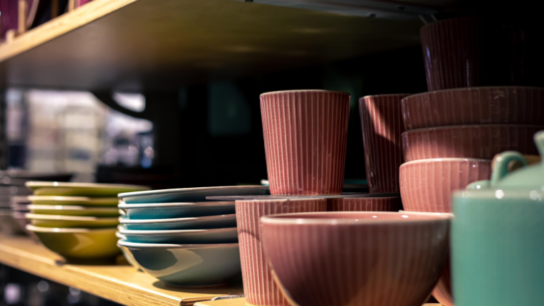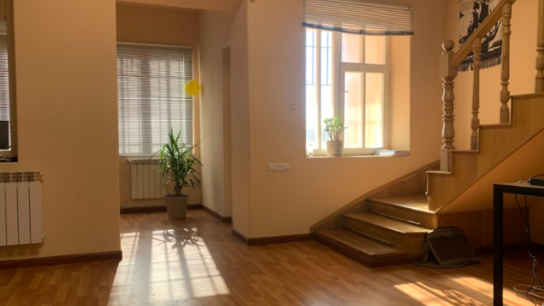1. Brush Techniques
Using the right brush and applying paint with proper brush techniques contribute to a smooth and even finish. Choose high-quality brushes suitable for the paint type (e.g., synthetic brushes for latex paint, natural bristle brushes for oil-based paint) and practice brush control for precise application.
Tips:
- Brush Selection: Use angled brushes for cutting in edges and corners, flat brushes for large areas, and detail brushes for intricate work. Clean brushes thoroughly before use to remove any loose bristles or debris.
- Loading the Brush: Dip the brush into the paint, then tap off excess paint to avoid drips or blobs. Load the brush evenly for consistent coverage and avoid overloading, which can lead to streaks or drips.
- Brush Strokes: Use smooth, even strokes with the brush, following the natural direction of the surface (e.g., vertical strokes for walls, horizontal strokes for furniture). Feather edges and blend strokes for seamless transitions.
2. Roller Techniques
Painting with a roller allows for faster coverage and a more uniform finish on large surfaces. Choose the appropriate roller nap (thickness) based on the surface texture (e.g., smooth, semi-smooth, textured) and use proper roller techniques for optimal results.
Tips:
- Roller Selection: Use short nap rollers (3/8 to 1/2 inch) for smooth surfaces and longer nap rollers (3/4 to 1 1/4 inch) for textured surfaces. Use foam rollers for ultra-smooth finishes on trim or cabinets.
- Roller Loading: Dip the roller into the paint tray, then roll it back and forth to evenly distribute paint on the roller cover. Avoid overloading the roller, which can cause drips or uneven application.
- Roller Application: Roll paint onto the surface using a W or M pattern to distribute paint evenly. Use light pressure and avoid pressing too hard, which can create roller marks or streaks. Feather edges and blend sections for a seamless finish.
3. Spraying Techniques
Spray painting is ideal for large areas, furniture, and detailed work where a smooth, fine finish is desired. Proper spraying techniques, including gun control, distance, and overlapping passes, contribute to a professional finish.
Tips:
- Spray Gun Setup: Adjust spray gun settings (e.g., air pressure, nozzle size, spray pattern) according to the paint type and desired finish. Test spray on a scrap surface to check coverage and adjust settings as needed.
- Spray Distance: Maintain a consistent distance (usually 6 to 12 inches) between the spray gun and the surface for even coverage. Move the gun smoothly and steadily, overlapping each pass slightly to avoid gaps or unevenness.
- Spray Technique: Start spraying before reaching the surface and continue spraying past the edge to prevent abrupt starts and stops. Keep the gun perpendicular to the surface for uniform coverage, and adjust speed for optimal paint flow.
4. Drying and Finishing
Allow sufficient drying time between coats to ensure proper adhesion and avoid smudging or blending of layers. Follow manufacturer’s recommendations for drying times and apply additional coats as needed for full coverage and durability. Use fine-grit sandpaper between coats for smoothness, and apply a topcoat or sealer for protection and a professional finish.
Tips:
- Drying Time: Allow paint to dry completely between coats (usually 2 to 4 hours) before sanding or applying additional coats. Use fans or ventilation to speed up drying in well-ventilated areas.
- Sanding Between Coats: Lightly sand surfaces between coats with fine-grit sandpaper (e.g., 220-grit) to smooth out imperfections, bumps, or brush marks. Wipe away dust with a tack cloth or damp cloth before applying the next coat.
- Topcoat or Sealer: Apply a clear topcoat or sealer after the final coat of paint has dried completely. Choose a finish (e.g., matte, satin, gloss) that complements the paint type and desired aesthetic. Follow manufacturer’s instructions for application and curing.
By mastering these painting techniques and following best practices for preparation, priming, and application, you can achieve a professional finish that enhances the beauty, durability, and longevity of your painting projects. Practice patience, attention to detail, and consistent techniques for optimal results, and enjoy the satisfaction of a beautifully painted surface that showcases your skills and creativity.
Revitalizing Your Front Entry: Doors and Porches
Your front entry sets the tone for your home’s aesthetic appeal and welcomes guests with style and charm. Revitalizing your front entry, including doors and porches, can transform the exterior of your home, enhance curb appeal, and create a welcoming first impression. In this guide, we’ll explore ways to revitalize your front entry, focusing on doors and porches, to elevate the overall look and feel of your home.
Subtitles:
- Enhancing Front Doors
- Revamping Porches for Curb Appeal
Enhancing Front Doors
1. Door Selection
Choosing the right front door is essential for a revitalized entryway. Consider the style, material, color, and features that complement your home’s architecture and design theme. Options range from classic wooden doors to modern fiberglass or steel doors with decorative glass panels or sidelights.
Tips:
- Style Compatibility: Select a door style that harmonizes with your home’s overall style, whether traditional, contemporary, rustic, or eclectic. Choose panel designs, glass inserts, or embellishments that enhance the door’s aesthetic appeal.
- Material Durability: Choose durable materials such as solid wood, fiberglass, or steel for long-lasting performance, security, and weather resistance. Consider insulated doors for energy efficiency and noise reduction.
- Color and Finish: Opt for a door color that complements your home’s exterior palette while making a statement. Coordinate with trim colors, accent hues, or architectural details for a cohesive look.
2. Hardware and Accessories
Upgrade door hardware and accessories to add functionality, security, and visual interest to your front entry. Choose high-quality handles, knobs, locks, and hinges that match the door style and finish for a cohesive appearance.
Tips:
- Handle Sets: Install stylish handle sets or lever handles with matching finishes (e.g., brushed nickel, bronze, matte black) for a modern or classic touch. Choose keyed entry locks or smart locks for added security and convenience.
- Door Knockers and Kick Plates: Consider decorative door knockers, kick plates, or doorbells that complement the door’s design and create focal points. Opt for finishes that resist tarnishing and enhance durability.
- Mail Slots and House Numbers: Incorporate mail slots, house numbers, or address plaques near the front door for functional and decorative purposes. Choose designs that coordinate with door hardware and reflect your personal style.
Revamping Porches for Curb Appeal
1. Porch Flooring
Upgrade porch flooring to enhance aesthetics, durability, and safety. Choose materials such as natural stone, brick pavers, wood decking, or composite materials that withstand outdoor elements and complement the overall front entry design.
Tips:
- Material Selection: Select porch flooring materials based on climate considerations, maintenance requirements, and visual appeal. Choose slip-resistant surfaces for safety, especially in wet or icy conditions.
- Color and Pattern: Coordinate porch flooring colors and patterns with the home’s exterior palette and architectural style. Consider contrasting or complementary colors for visual interest and curb appeal.
- Maintenance and Protection: Seal and maintain porch flooring regularly to protect against moisture, UV exposure, and wear. Use rugs, mats, or outdoor furniture pads to prevent scratches and damage.
2. Porch Decor and Furniture
Enhance porch decor and furniture to create inviting outdoor living spaces that reflect your style and personality. Choose comfortable seating, decorative accents, lighting fixtures, and seasonal decor for a welcoming front porch.
Tips:
- Seating Arrangements: Arrange porch seating such as benches, chairs, or swings to encourage relaxation and socialization. Use weather-resistant cushions, pillows, and upholstery for comfort and durability.
- Decorative Accents: Add decorative accents such as planters, outdoor rugs, wall art, and seasonal wreaths to enhance porch aesthetics. Incorporate potted plants, flowers, and greenery for natural beauty and color.
- Lighting Options: Install porch lighting fixtures such as sconces, lanterns, string lights, or overhead fixtures for ambiance and visibility. Use solar-powered lights or low-voltage lighting for energy efficiency.
3. Entryway Landscaping
Enhance your front entry with landscaping elements that frame the door, define pathways, and add greenery and texture. Incorporate plants, shrubs, trees, and hardscape features to create a cohesive and inviting entryway.
Tips:
- Plant Selection: Choose plants and flowers that thrive in your climate and complement the home’s exterior colors. Consider seasonal blooms, foliage textures, and varying heights for visual interest.
- Container Gardens: Use decorative containers, planters, and urns to create container gardens near the front door. Arrange plants in groupings, vary plant heights, and mix foliage and flowering varieties.
- Pathway Design: Define pathways leading to the front door with borders, edging, or hardscape materials such as bricks, stones, or pavers. Ensure pathways are well-maintained, level, and safe for foot traffic.
4. Seasonal Updates and Maintenance
Regularly update and maintain your front entry, including doors and porches, to keep it looking fresh, functional, and inviting throughout the seasons. Perform routine cleaning, repairs, and seasonal decor changes to enhance curb appeal.
Tips:
- Seasonal Decor: Update porch decor and seasonal accents according to holidays, seasons, or special occasions. Use wreaths, banners, flags, and themed decor to add festive charm.
- Maintenance Checks: Inspect doors, hardware, porch flooring, and landscaping regularly for signs of wear, damage, or deterioration. Repair or replace damaged components promptly to maintain curb appeal and safety.
- Cleaning and Care: Clean doors, windows, hardware, and porch surfaces regularly to remove dirt, debris, and grime. Use appropriate cleaning products, techniques, and protective finishes for long-term maintenance.
By focusing on enhancing front doors and revamping porches, you can revitalize your front entry and create a welcoming and stylish facade for your home. Incorporate personal touches, seasonal updates, and maintenance routines to keep your front entry looking its best year-round. A revitalized front entry adds curb appeal, value, and pride of ownership to your home, making it a welcoming and inviting space for residents and guests alike.







